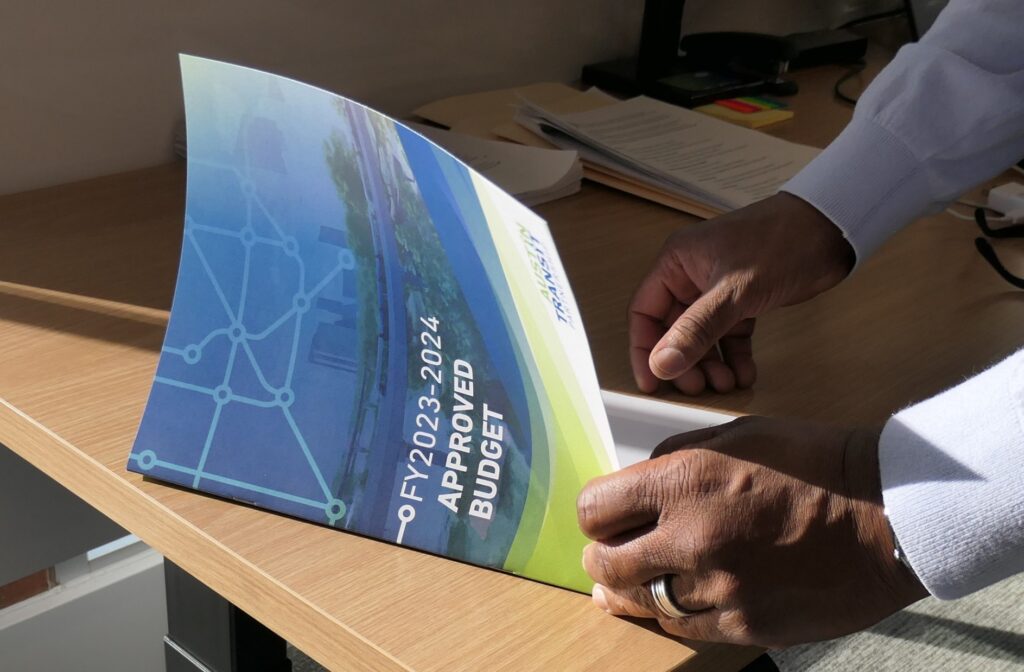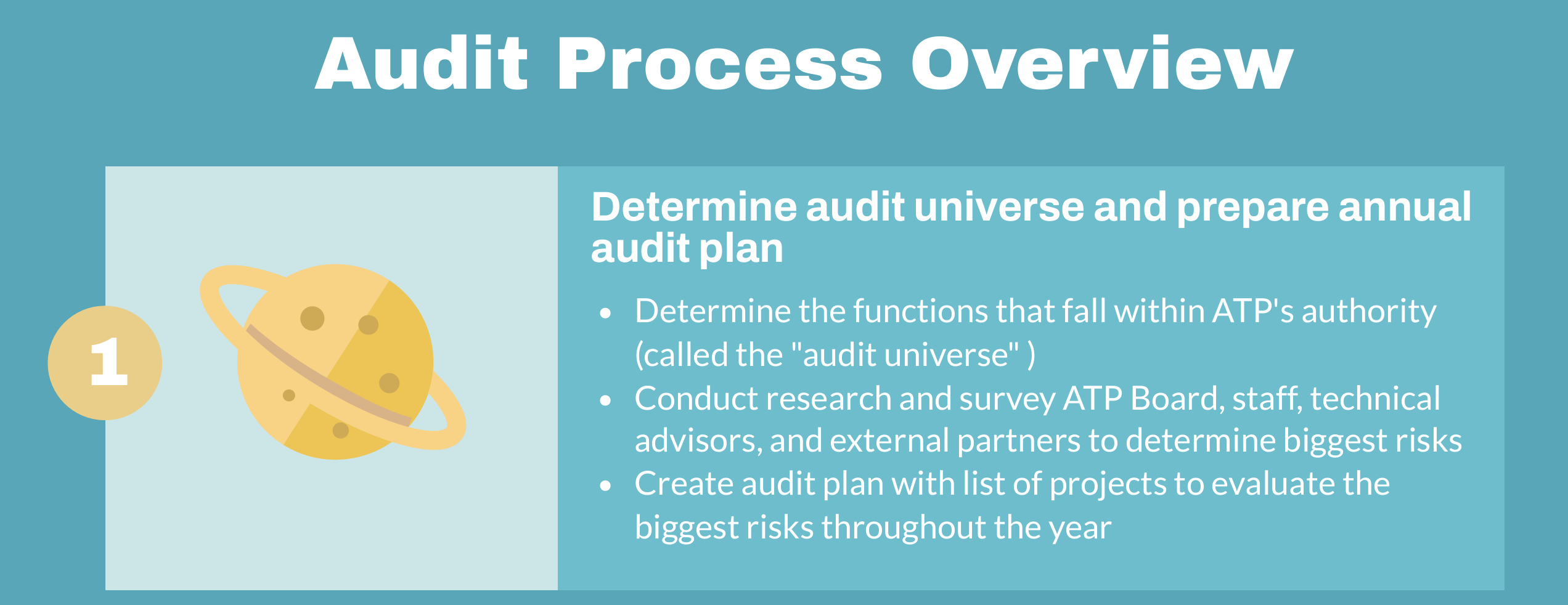The mission of Internal Audit is to help improve ATP’s governance, control, and risk management by conducting independent audit and advisory service projects. Internal Audit reports directly to the ATP Board and is independent of the administration of ATP. This allows us to more objectively evaluate how well ATP is delivering on its charge to carry out the voters’ transit vision in partnership with the community.
Internal audit primarily conducts three types of projects: audit projects, advisory projects and follow-up projects. Separate from these, Internal Audit oversees ATP’s ethics hotline and conducts related ethics investigations as needed.

At the start of ATP’s fiscal year, Internal Audit shares the plan for what we intend to audit in the upcoming year. The Internal Audit Plan notifies the public, the Board and management which aspects of ATP’s governance, control and risk management our work will address in the upcoming year. Projects in this plan include audit and advisory services conducted by Internal Audit, and projects outsourced to external assurance providers.

Beginning with the Audit Plan, Internal Audit prepares for and conducts fieldwork resulting in findings and recommendations. Post-audit, we follow up to assess the results of actions taken.
If you have a concern about misconduct, suspected fraud, waste, abuse, or a violation of ATP policies, or if you fear retaliation relating to an ethical matter, ATP provides simple and anonymous ways to voice your concerns. File your report via the portal below, or call 888-57-2ATPTX for assistance.
Internal auditing helps an organization accomplish objectives by evaluating and improving the effectiveness of risk management, control, and governance processes. An effective, independent Internal Audit function can increase a government’s credibility with the public, oversight agencies, granting authorities, and bond markets.
We evaluate ATP to see if there are ways to operate more effectively and efficiently. If we identify process improvement opportunities, we make recommendations on how to improve ATP to management, and ATP management then decides whether they agree or disagree with those recommendations. When they agree, they formulate an action plan on how they’ll make those improvements and then auditors will follow up on those actions plans periodically in future years. When ATP management and auditors work together, we are more accountable to taxpayers and ultimately, we are better able to serve the City.
Internal audit primarily conducts three types of projects.
Internal Audit also oversees ATP’s ethics hotline and conducts related ethics investigations as needed.
The role of ATP’s independent auditor was established in 2020 when the vision of ATP’s funding and governance was created. The mission of Internal Audit is to help improve ATP’s governance, control, and risk management through independent, objective assurance and advisory services.
Internal Audit is organizationally independent of ATP administration and reports directly to the Board, typically through the Finance and Risk Advisory (FAR) Committee.
ATP functions selected for audit come from an organization wide risk assessment that auditors conduct once a year. This assessment evaluates the governance, risk environment, and operations of ATP and it prioritizes key risks to be further evaluated through audit and advisory projects throughout the upcoming year. Projects are included on the Annual Audit Plan and that plan is approved by the ATP Board. Good news! Since we act with transparency, we share this plan in a public meeting every September.